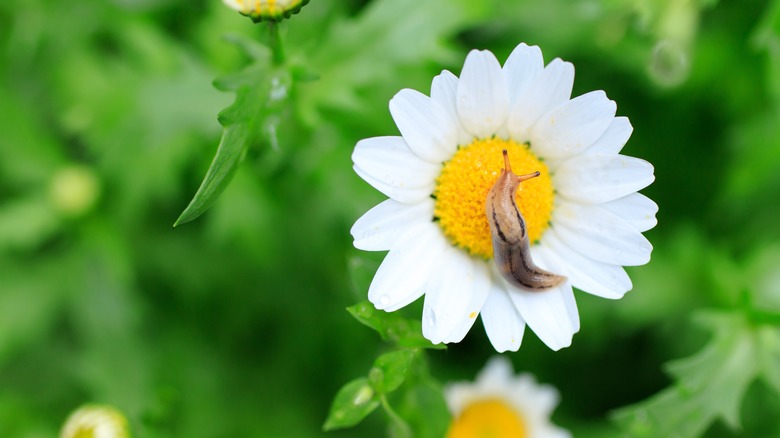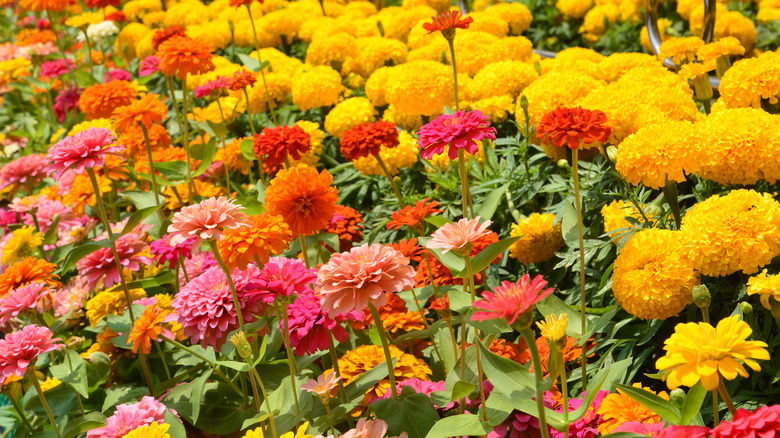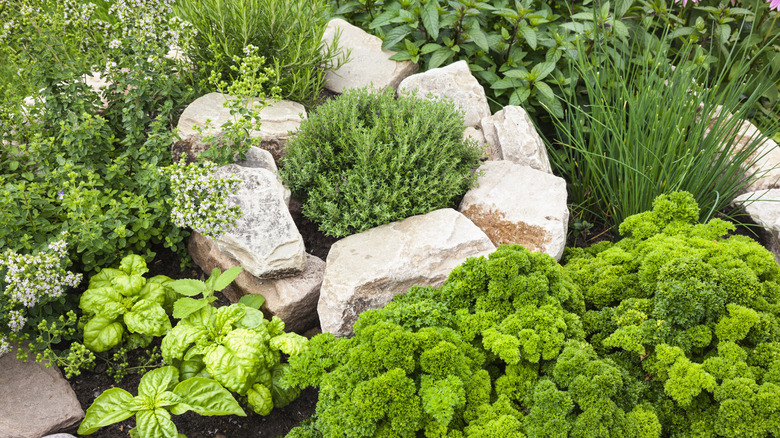The Natural Way To Keep Slugs Off Your Precious Flowers
Throughout winter, we dream of the gorgeous spring and summer blooms that await us when the warm weather returns. Unfortunately, we are not the only ones waiting for those flowers to emerge. Slugs can damage every part of a plant above the soil line. When delicate seedlings first emerge, these pests often eat them down to a nub before you even know there is a problem. Slugs may also arrive a bit later in the season when your flowers have already bloomed, damaging leaves or consuming the flower petals. There are chemical pesticides that will keep slugs out of your garden and away from your fine roses and dahlias, but careful garden planning offers a more eco-friendly option. Placing the right plants around your favorite flowers draw them away, acting as a sacrificial crop, or repel them from the area completely.
It can be difficult to know what kind of pest is damaging your plants. The most obvious sign that a slug is your enemy is the slimy trail they leave behind. They love tender new growth, like fresh sprouts, but will leave bite marks in stems and large holes in leaves. Perhaps the most frustrating damage is to the blooms themselves because slugs love those tender petals.
Trap crops
Placing a trap crop in another area of your garden to draw slugs away from your favorite flowers is one way to deal with slugs without pesticides. The key to growing a successful trap crop is to grow the pest's favorite plants. Imagine a family of slugs entering your garden and heading for your favorite flowers when suddenly, they hear "Hey! The food's better over here!" They change direction and proceed to feast on the trap crop and leave your flowers alone.
Marigolds are a favorite meal for slugs and are easy to grow from seed. You can often find six-packs of these garden favorites inexpensively at most garden centers in the spring. Slugs are also attracted to zinnias and calendula, so if these are the flowers you are trying to protect, plant rows of marigolds around them since they are more hardy and bloom prolifically. If you want to protect perennial bushes and other flowers from slug damage, marigolds planted nearby will attract slugs, protecting your permanent landscape plants.
If you have a major problem with slugs, you can also use your trap crop to attract slugs to eliminate them. Organic pesticides that contain iron phosphate, like Sluggo, are considered safe to use around children, pets, and birds, though studies still need to be done about how it affects earthworms and dogs. With the slugs gathered around your trap crop, apply the pesticide. They will consume the pellets, eliminating the slimy pests.
Repellants
Although it seems like slugs will eat almost any plant, there are some they do not like. Placing these plants around your gorgeous flowers will send them searching for a more appealing meal. Most aromatic plants are effective at repelling slugs. Plant strongly scented herbs like rosemary, lavender, and oregano around your garden. The essential oils contained in the leaves that make them appealing to us make them revolting to many types of pests.
Herbs are not the only strongly scented slug repellant you can place in your garden. Consider complimenting your favorite flowers with even more beauty by planting geraniums. Some perennial species are hardy to zone 3 as well as many gorgeous annual options. Slugs do not like the smell or hairy texture of their leaves, which makes them difficult to consume. To protect your precious flowers in shade or partly shaded areas, hydrangeas and ferns are also unappealing to slugs.


